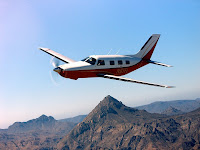For those who wanted the links to the weather sites, I have put them below with images of the winds speed and wind streamlines at 9000'.
http://aviationweather.gov/adds/winds/
Note that the winds travel anti-clockwise around lows in the Northern Hemisphere.
When you go to this link it gives the choice of selecting one of four different images and the choice of prognosis at different altitudes or Flight Levels, for up to the next 84 hours. I use this first as it gives me a wind forecast for 3 1/2 days ahead.
For the wind speeds, the longer tail on the end of the barb represents about 10 knots and a 1/2 tail represents about 5 knots. A dark flag is about 50 knots. The point of the arrow or barb is pointing in the direction the wind is blowing.
Then go to the satellite image as that gives an understanding of the cloud and the cloud movement, and visually complements the wind speed and wind stream images.
http://aviationweather.gov/obs/sat/intl/
For some reason this takes you to Aviation Weather, so in the left hand column under Observation click on Satellite - Intl. This should take you to the page above. Think I fixed it, but if not, go back to square 1.
Another visual site is http://www.rap.ucar.edu/weather/progs/
Finally, for the current forecast/actual wind speeds between Santa Barbara and Hawaii, use the following link.
http://www.prh.noaa.gov/data/HFO/RFRKSF
If necessary, click Route Forecast San Francisco/Santa Barbara to Honolulu Route
Read the bottom forecast headed SBA/HNL. For interpretation read Chapter 9.
From the top images which are forecast winds for Wednesday 3rd January 0000 UTC, I don't think we are going anywhere until at least Saturday 6th February.
Click on images to enlarge










